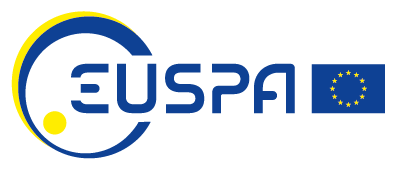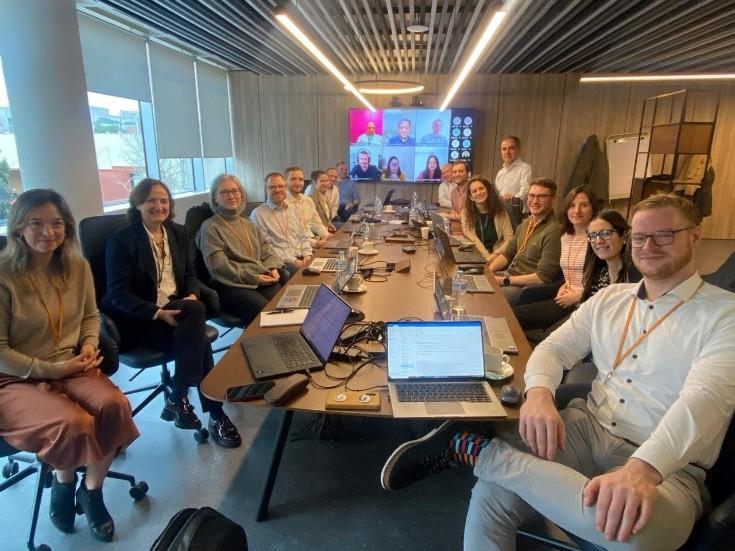




On March 6th – 7th, 2025, barely a year after the beginning of the project, the EGNSS Dual-Frequency/Multi-Constellation for GBAS Based Operations (EDGAR) team meets in Madrid to discuss on the many contributions already achieved within EDGAR, and on the way forward to capitalize them.
EDGAR, partially funded by EUSPA (European Union Agency for the Space Programme) under the Horizon Europe programme of the EU, aims at contributing towards the development of an improved, more reliable, robust and accurate GBAS solution that responds, on the one hand, to the increasing demand for enhanced approach and all-weather operations in the ever-growing volume of air operations; and on the other hand, to sustainability requirements towards the compliance with EU Green Deal objectives.
The project also pursues to contribute to the goal of an early Dual-Frequency Multi-Constellation (DFMC), GBAS solution that might support more stringent operations and increased robustness, thus rendering benefits to the aviation community.
Along this first year of project, the consortium members have been working hard to further contributing to the development of the Dual-Frequency Multi-Constellation (DFMC) GBAS solution; to analyse the distinguishing features of DFMC and Single-Frequency Multi-Constellation (SFMC) GBAS brought by the addition of Galileo; and to facilitate CAT II service to GAST C airborne users based on a GAST D (GBAS approach service type based on GPS L1) ground station with EGNSS integration.
Some of these contributions are:
- First implementation, analysis and testing of DFMC GBAS primary and fall-back modes.
- Consolidation of assumptions list to cope with delays in DFMC GBAS SARPs and MOPS.
- Modelling of scintillation caused by scattering on equatorial plasma bubble structures. The first prototype for scintillation simulator for vertical links is ready.
- Threshold derivation for the Dual Solution Ionospheric Gradient Monitoring Algorithm (DSIGMA) for GAST D1 and GAST D2 fallback modes based on real measurements from flight campaigns provided by ENRI.
- Threshold derivation for the ground Code Carrier Divergence (CCD) for GAST D1 and GAST D2 fallback modes based on real measurements from DFMC Multipath Limiting Antennas (MLAs) installed in Tenerife Norte.
- Threshold derivation for the airborne Code Carrier Divergence (CCD) for GAST D1 and GAST D2 fallback modes based on real measurements from flight campaigns carried out during the Horizon 2020 DUFMAN project.
- Characterization of ground DFMC MLA errors in DLR’s anechoic chamber.
- Analysis of MLA multipath susceptibility in an exemplary scenario by the use of digital twins.
- Extension of airborne multipath error models for DFMC GBAS operations
- Verification of Ground Accuracy Designator models for the ground subsystem for DFMC GBAS, in particular concerning the Galileo constellation. This is needed for the ICAO Standards and Recommended Practices (SARPs).
- Contributing to the definition of Message Type 23 through the ICAO DFMC GBAS SARPs Drafting Group. This message is used to broadcast measurements from the GBAS ground subsystem to the airborne subsystem.
- Evaluation of augmented geometry screening to support CAT II GAST C using Galileo and GPS to take into account the measured ionospheric activity to reduce conservatism.
Throughout 2024 and early 2025, EDGAR has published 4 scientific papers at ION GNSS+, ION ITM and ION PLANS, and presented the preliminary results of the project at the main standardization and international working groups on DFMC GBAS, such as EUROCAE WG-28, RTCA SC-159 WG4, ICAO NSP JWGs, DFMC GBAS SARPS drafting group and IGWG.
The consortium has also taken the first steps in building the eGBAS portal, a web platform that aims to disseminate GBAS applications and their benefits, the last findings, trends and news on GBAS, as well as to serve as a reference to find GBAS documents, reports and other data.
Led by ENAIRE, the Spanish Air Navigation Services Provider, EDGAR is composed of experts from DLR, SINTEF, Zurich University of Applied Sciences, DFS, ENAV, Indra, Boeing Aerospace Spain and PildoLabs.


